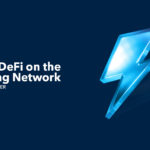The financial industry is undergoing a major transformation as blockchain technology and decentralized finance (DeFi) gain momentum. When we talk about blockchain, the first thing that strikes your head is tokenization. This concept has introduced numerous advantages including programmability, composability, and enhanced transparency that empower financial institutions to enhance their operational efficiencies, increase liquidity, and create new revenue opportunities through innovative use cases. These benefits are now being realized today, with large asset management firms having started showing interest in them.
In line with this trend,
BlackRock, the world’s largest asset management firm, is taking its tokenized fund offerings to multiple blockchains, including Polygon, to expand its reach and enhance the investment experience for a broader range of investors.
This bold step to integrate its tokenized fund with popular blockchain networks, particularly Polygon, represents an evolution in how institutional assets could be managed, traded, and secured in the future.
But why has BlackRock marked this significant move? There are many reasons-
What’s the News?
According to a Nov 13 announcement, BlackRock, the world’s largest asset management firm, is expanding its tokenized real-world asset fund BUIDL (tokenized by Securitize & first introduced on the Ethereum network in March 2024) to other blockchains, including Aptos, Arbitrum, Optimism’s OP Mainnet, Avalanche, & Polygon.
This strategic move marks the next phase in the evolution of the tokenization market, allowing BlackRock USD Institutional Digital Liquidity Fund or BUIDL to be used with top blockchain-based financial products and infrastructure across various ecosystems.
BUIDL emerged as the largest tokenized fund in terms of AUM or assets under management in less than 40 days. It is now available to investors, DAOs, and other digital asset-native firms, on Aptos, Arbitrum, Avalanche, OP Mainnet (formerly known as Optimism), and Polygon. This significant move broadens its accessibility and makes it the largest money-market token of its kind.
According to Securitize CEO and co-founder Carlos Domingo,
“We wanted to develop an ecosystem that was thoughtfully designed to be digital and take advantage of the advantages of tokenization,”
“Real-world asset tokenization is scaling, and we’re excited to have these blockchains added to increase the potential of the BUIDL ecosystem. With these new chains, we’ll start to see more investors looking to leverage the underlying technology to increase efficiencies on all the things that until now have been hard to do.”

How can Firms Like BlackRock Benefit from Tokenizing Funds for Several Blockchains?
- Reduced Management Fees Across Chains
Tokenizing funds allows BlackRock to leverage competitive fee structures on different blockchains. For instance, fees can vary based on network costs, with lower fees on chains like Aptos, Avalanche, and Polygon (20 basis points) compared to Ethereum, Arbitrum, and Optimism (50 basis points). This flexibility enables cost savings that can be passed on to investors.
- Enhanced Access to DeFi Ecosystems
Expanding tokenized funds across multiple chains fuels integration with DeFi platforms, which further provide investors with numerous benefits such as on-chain yield generation, peer-to-peer transfers, and real-time dividend accrual. By tokenizing money market funds, BlackRock can enter a broader financial ecosystem, and perfectly align with DeFi’s potential to drive innovation.
- Improved Transparency and Liquidity
Tokenization can increase market transparency by providing real-time insights into asset flows. According to the U.S. Department of the Treasury, distributed ledger technology (DLT) and tokenization can enhance liquidity in markets like U.S. Treasuries. For BlackRock, this could mean increased transparency for investors and regulators, addressing key compliance and risk factors.
Closing Thought
Tokenizing funds across multiple blockchains is not just about spreading assets; it’s about tapping into the unique strengths of various networks, whether it’s through enhanced liquidity, better scalability, or reduced security risks. As BlackRock’s BUIDL project expands to include a wider range of blockchain ecosystems, it highlights the evolving nature of decentralized finance and the increasing importance of multi-chain strategies. Alongside BlackRock, other financial giants like Franklin Templeton are also expanding their tokenized funds onto networks such as Base, Coinbase’s layer-2 blockchain.
By adopting this approach, tokenized funds become more adaptable, resilient, and accessible, benefiting both the financial markets and the broader blockchain ecosystem. The future of tokenization is undoubtedly multi-chain, and those who embrace this shift stand to gain a competitive edge in an increasingly interconnected digital economy.







